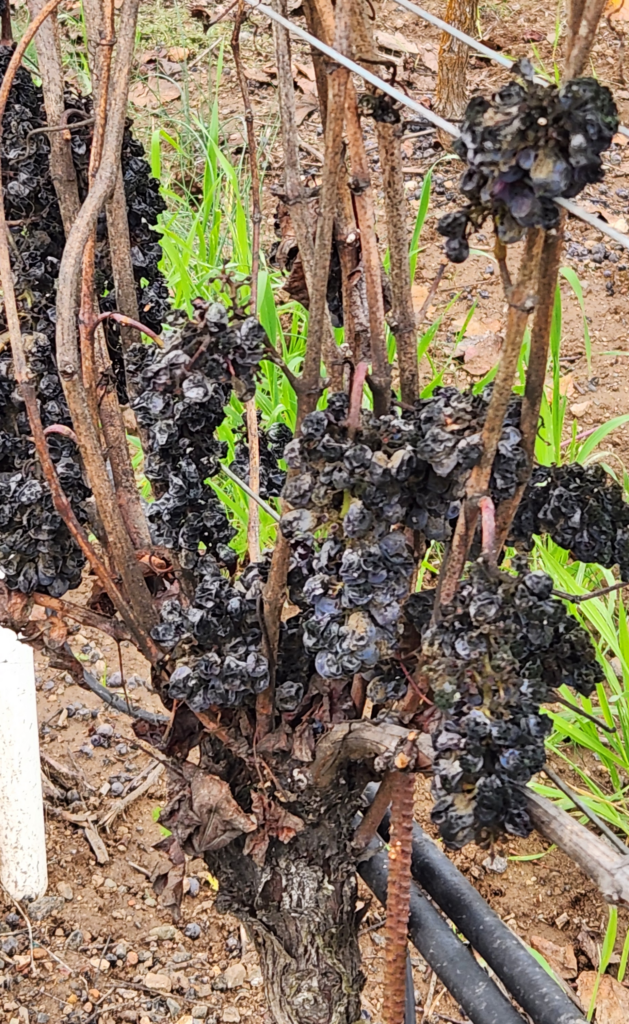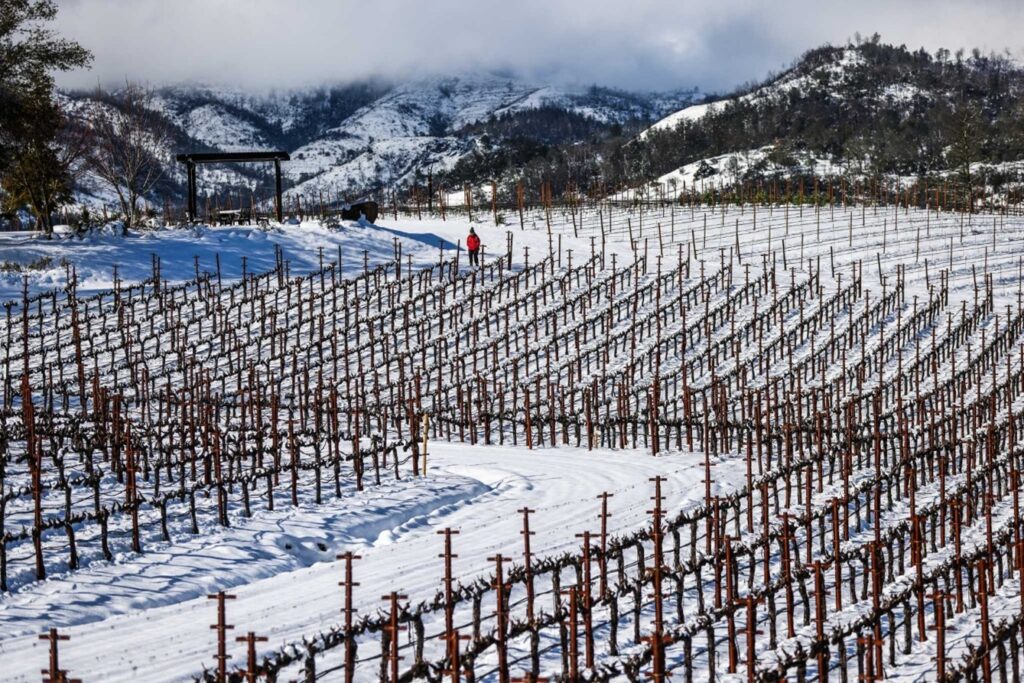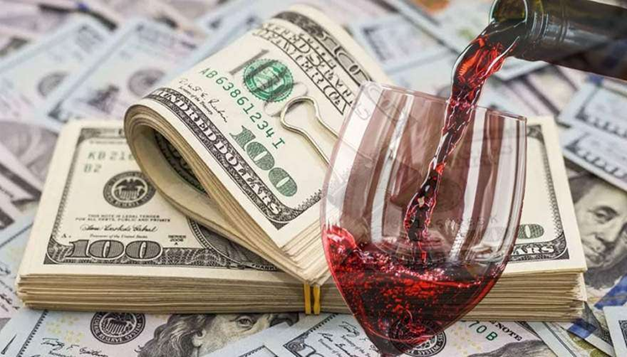The pandemic is in the rearview mirror in Sonoma County. So are the fires of 2017 and 2020. There are some landmarks that will never be replaced but there is plenty of building and expansion, especially regarding tourism. Which is to say, wine-tasting tourism. There are new restaurants in the obvious places, such as Healdsburg and Santa Rosa, but also in tiny Geyserville. All in all, times are good.
Healdsburg Plaza. Photo courtesy of Sonoma County Tourism.
But there are a few cracks in that pretty picture. Wine consumption is in decline in the United States and worldwide, according to reports in Decanter magazine and the Guardian. As a result, some wineries are feeling a financial pinch. One winery that we know and enjoy is letting fruit rot on the vines, because the cost of picking them wasn’t justified by the wine they couldn’t sell.
Mature grapes rotting on the vine.
The crackdown on immigration is also having an effect. It is no secret that California’s agricultural industries are built on the backs of immigrant laborers. The inbound flow of workers has ceased and many already here are afraid to show up for work. Raids on vineyards have left many people afraid to come to work.
For the most part, none of this is evident to the average wine taster. There appear to be more wineries opening their doors (or are we just noticing more that we used to drive past?). Restaurants are crowded, even off-season, although there seem to be more locals dining there than in summer. As an overall statement based on an admittedly limited sample, Sonoma County is maintaining and even expanding its place in the world of fine winemaking.
Almost without exception, Sonoma County wineries have adopted the seated-tasting-by-reservation model that appeared after the pandemic. This does enable the wineries to gauge the amount of staff they need on any given day, although we did enter quite a few where two servers were chatting with each other because we were the only visitors at the time. To be fair, the ones that have always been tourist favorites, such as Domaine Carneros (in Napa Valley, just over the county line) or Dry Creek Vineyard are as crowded as ever. And we were able to simply walk into almost all tasting rooms without a reservation.
Certain things haven’t changed and probably won’t. Dry Creek still is the place to go for Zinfandel; Russian River for Chardonnay and Pinot Noir; and Alexander Valley for Cabernet Sauvignon. The rolling hills are gorgeous in every season and expansive fields of vines will always tug at our heartstrings.
And one thing seems even more pronounced. The people we meet at the wineries are so friendly! They seem equally appreciative of the life they lead amidst the vines and of the visitors who enjoy the wines they produce. We encountered none of the snobbism that typifies other (not to be named) regions in California. From temporarily employed servers to winery owners whom we met, they all seemed genuinely pleased to see us and share their wines with us. That alone is sufficient reason to visit Sonoma County in these troubled times.










